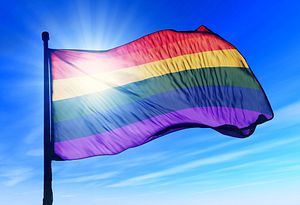In the past year, even as Nigeria, Uganda and Russia have legislated anti-gay measures, civil society in Afghanistan, Iran and India have been on the cultural offensive to promote LGBTIQ (lesbian, gay, bisexual, transgender, intersex, and questioning) rights.
In Afghanistan, my pioneering coming out on Facebook last August has become engrained in the popular culture of a collectivist nation that still believes being gay is against Islam. Since I started my campaign, millions of Afghans have heard me talk on the airwaves or have read my words in print or on the web. While LGBT rights in Afghanistan are virulently resisted, they are no longer a foreign concept. Six months ago, I endorsed Dr. Ashraf Ghani for president of Afghanistan in this year’s election and since then LGBTIQ Afghans have mobilized a rainbow bloc to vote for the former academic. As Afghanistan heads for a runoff election, gay Afghans now have a voice and visibility when a year ago they were dormant and had nothing.
In neighboring Iran on Valentine’s Day, pop queen Googoosh released a queer music video on her website, infuriating the Islamic Republic’s theocratic rulers. Googoosh’s tribute to a lesbian couple couldn’t have been better timed as it coincided with the twenty-fifth year anniversary of Ayatollah Khomeini’s fatwa on Salman Rushdie for publishing The Satanic Verses. Googoosh’s pro-LGBT publicity is a huge leap from a time in 2007 when former President Mahmoud Ahmadinejad, at a talk at Columbia University, denied the existence of gays in Iran.
And last week in India, the United Nations debuted a Bollywood music video to promote the acceptance of gay relationships in the world’s largest democracy. Bollywood’s solidarity with LGBT will serve as a potent force multiplier as its audience, estimated at three billion, overlaps with the roughly 80 countries, mostly in Africa and Asia, where homosexuals are still criminalized for their sexual orientation.
The pro-LGBT push in Afghanistan, Iran and India will only amplify as elite and commoner debate the value of human rights versus intolerance stemming from illiberal, religious and superstitious beliefs. How can a nation ever become civilized when it forces its own citizens—from cradle to grave—to live in constant fear and shame and be marginalized to the fringes of society?
Iran and Afghanistan are fertile ground for a gay rights movement as both countries wield enormous soft power that could nudge the world’s 1.6 billion Muslims towards a sexual revolution. In the late twentieth century, Iran and Afghanistan transformed the ideological landscape of the Islamic World. As the Islamic revival grew in the 1970s, the rise of the twin fundamentalist revolutions—Ayatollah Khomeini’s ascent to power in Iran and the Mujahedeen’s resistance and eventual triumph over Soviet communism in Afghanistan—altered the world’s geopolitical map.
As Khomeini’s Iran went to war with Iraq and the communist Afghan regime became entrapped in an imbroglio—both countries grew anti-American and a wave of Jihadi fervor swept across the world, causing secularists as far away as Algeria and Yugoslavia into retreat. In Western Europe, the children of many Muslim immigrants regressed into a state of religiosity as the globalization of Jihad spread Islamicization to the Occident.
Today, gay Afghans and Iranians with the help of their more established Indian counterparts can set off another global crusade; this time mobilizing a sexual revolution throughout the developing world. All three countries in this triad had rich and ancient cultures predating Islam that embraced the third gender and homosexual love. So it’s odd today that gay rights would even be contested given all the evidence that validates homosexuality as an innate trait.
Millions of Afghans, Iranians, and Indians live in territories in the diaspora where gay civil unions or same-sex marriage is the norm. More can be done by these immigrant communities to end the homophobia and repression in their homelands, just as the Bollywood Stars, Googoosh, and I have done by firmly standing for LGBT equality.
Another weapon at the disposal of gay Afghans, Iranians, and Indians is demography. All three countries are experiencing a youth bulge. The under-25 cohort represents 65 percent of Afghanistan and about half of Iran and India’s population. Young people everywhere are becoming increasingly gay affirmative as the proliferation of communication exposes and expands the gay rights movement.
Pessimists will say that legalizing the status of LGBTIQ in Afghanistan, Iran and India is impossible when bigots outnumber gays. If that defeatist attitude held sway then gays living in the sixteen countries and parts of Mexico and the U.S. where same-sex marriage is allowed today would have never even attempted to overcome the tyranny of the majority. Gays everywhere must continue to fight for their freedom and persuade their opponents to support their cause. As the seeds of a gay spring germinates in Afghanistan, Iran and India, it is possible to begin to imagine the day when the rainbow flag will proudly soar over the skies of Asia.
Nemat Sadat is a human rights activist and a Kellogg College student pursuing a master of studies in creative writing at the University of Oxford. Sadat is a former professor of political science at the American University of Afghanistan. He is writing his first novel and lives in New York City. You can follow him on Twitter at @nematsadat.

































